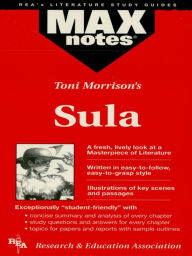
- Browse Category
Subjects
 We Begin at the EndLearn More
We Begin at the EndLearn More - Choice Picks
- Top 100 Free Books
- Blog
- Recently Added
- Submit your eBook
password reset instructions

Seminar paper from the year 2011 in the subject English Language and Literature Studies - Culture and Applied Geography, grade: 1,3, Martin Luther University (Institut für Anglistik und Amerikanistik), course: Women in 18th and 19th Century Britain, language: English, abstract: Let your children be brought up together; let their sports and studies be the same; let them enjoy, in the constant presence of those who are set over them, all that freedom which innocence renders harmless, and in which Nature rejoices. (MACAULAY 1790: 32) Eighteenth Century England was a time in which women had little to say in society. They did not have the right to vote, they were not allowed to own properties, when married and as the husband was the chief breadwinner, they were not supposed to work. As they could not leave the house alone without being considered a prostitute, they were confined to the home where they would have to take care of the children and the household, 'a subordinate role [...] in society' (AUGUSTIN 2005: 2). As a consequence, as girls did not need to go to school to learn their future tasks as housewives, they were educated at home by their mothers who acted as a role model. The entire eighteenth and well into the nineteenth century there was little change in how girls and women were educated. The old system of patriarchy was still well established but it began to crumble little by little. Women began to fight for their rights getting more and more supporters. This work is trying to shed light on this period's progression from girls being educated poorly to girls having the same education as their brothers. The fist chapter is going to show how gender differences were tried to be justified from a psyco-medical point of view, transferring the scientific findings to women's roles in society. The second chapter will show how important women were beginning to challenge the old system, disproving the validity of the scientific findings. Here a subdivision between the eighteenth and the nineteenth century is necessary to properly cover a timespan of roughly 150 years. The Bluestocking Circle as one of the first organizations of women will be shown as the point of departure for women's disapproval of the old system. In this context Mary Wollstonecraft as the leading character of the eighteenth century is going to be the center of attention as well as other important writers such as Catherine Macaulay Graham, Emily Davies and Elizabeth Wolstenholme-Elmy. Of course there were many more women who would need to be mentioned, but due to limited space of this work, cannot be analyzed. Having shown progressive views on how the education of girls should be adapted, the last chapter is going to give some insights on what schooling ...
Less- Publication date
- Language
- ISBN
- October 6, 2016
- English
- 43265201-52ea-4742-b330-cdfe02829b66



























